















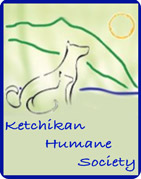

 Contact Contact 
 Webmail
Letters Webmail
Letters
 News Tips News Tips
 Copyright Info Copyright Info
 Archives Archives
Quick News
Search
 Alaska Alaska
 Ketchikan Ketchikan
 SE Alaska SE Alaska
Columns
- Articles
 Dave Kiffer Dave Kiffer
 Money Matters Money Matters
Historical
Ketchikan
 June Allen June Allen
 Dave
Kiffer Dave
Kiffer
 Louise
B. Harrington Louise
B. Harrington
Ketchikan
Arts & Events
 Ketchikan
Arts Ketchikan
Arts
 Ketchikan
Museums Ketchikan
Museums
 KTN Public
Library KTN Public
Library
Sports
 Ketchikan Links Ketchikan Links
Public Records
 FAA Accident Reports FAA Accident Reports
 NTSB
Accident Reports NTSB
Accident Reports
 Court Calendar Court Calendar
 Recent Filings & Case Dispositions Recent Filings & Case Dispositions
 Court Records Search Court Records Search
 Wanted:
Absconders Wanted:
Absconders
 Sex Offender Reg. Sex Offender Reg.
 Public Notices Public Notices
 AST Daily Dispatch AST Daily Dispatch
 KTN
Police Reports KTN
Police Reports
 Juneau Police Reports Juneau Police Reports
Weather,
Webcams
 Today's
Forecast Today's
Forecast
 KTN
Weather Data KTN
Weather Data
 AK
Weather Map AK
Weather Map
 AK Weathercams AK Weathercams
 AK Earthquakes AK Earthquakes
TV Guide
 Ketchikan Ketchikan
Ketchikan
Phone Book
 Yellow
Pages Yellow
Pages
 White
Pages White
Pages
Government
Links
 Local Government Local Government
 State & National State & National

|
|

Sunday
September 10, 2017
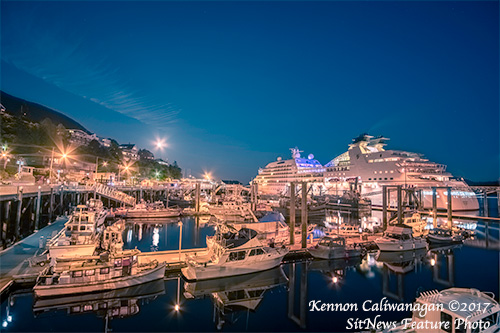
|
Harbor Lights
Front Page Feature Photo By KENNON CALIWANAGAN ©2017
Borough Election
OCTOBER 03, 2017
This is the 15th year, Sitnews has provided FREE web exposure to all local Ketchikan candidates to provide information for consideration by voters.
Tell your possible future constituents about your background, qualifications for the position, etc. Please send a photo. Links to your social media page accepted: Email to editor@sitnews.us
Respond By: 09/26/17
The sooner the better; absentee voters may vote as early as 15 days prior to the Borough election.
Ketchikan Borough Assembly
3 Year Term - 3 Seats Open
Ketchikan School Board
3 Year Term - 2 Seats Open
Ketchikan School Board
1 Year Term - 1 Seat Open
 |
Bill Blankenship
Filed 08/21/17
|
 |
Glenn J. Brown
Filed 08/25/17 |
Ketchikan City Council
3 Year Term - 3 Seats Open
Online Voter Registration
KGB Election Information
City of Ketchikan Election Info.
|
|
Fish Factor: Alaska Salmon Harvest Tops Forecast; Lots of September Fishing Going On! By LAINE WELCH - Alaska’s salmon season is nearly a wrap but fall remains as one of the fishing industry’s busiest times of the year.
For salmon, the catch of 213 million has surpassed the forecast by nine million fish. Highpoints for this season are a statewide sockeye catch topping 50 million for the tenth time in history (37 million from Bristol Bay), and one of the best chum harvests ever at more than 22 million fish.
The total 2017 salmon catches and values by Alaska region will be released by state fishery managers in November.
Hundreds of boats are now fishing for cod with September 1 openers at Prince William Sound, Cook Inlet, Kodiak and throughout the Bering Sea.
Pollock fishing reopened to trawlers in the Gulf of Alaska on August 25. More than 3 billion pounds of pollock will be landed this year in Alaska’s Gulf and Bering Sea fisheries. Fishing also is ongoing for Atka mackerel, perch, various flounders, rockfish and more.
Halibut are still crossing docks across the state, and Alaska longliners have taken 75 percent of the 18 million pound catch limit. Most of the halibut catch (over 2.5 million pounds so far) is crossing the docks at Kodiak, followed by Seward. Homer, which bills itself as “the nation’s top halibut port,” is a distant third for landings.
The sablefish (black cod) catch is at nearly 70 percent of its 22.5 million pound quota. Both the halibut and sablefish fisheries continue this year through November 7.
Crabbers are gearing up for the October 1 start of the fall Dungeness fishery in Southeast Alaska, and mid-October crab openers in the Bering Sea. The dungy fishery should produce more than one million pounds; the catch quotas for red king crab, snow crab and (hopefully) Tanners will be released in a few weeks.
Shrimpers also will drop pots on October 1 for nearly a half million pounds of big spot prawns from Southeast waters. Dive fisheries also open that same day for sea cucumbers, where a harvest of usually around one million pounds (“poke weight,” meaning drained) will be delivered over a few months. Smaller sea cucumber fisheries also occur at Kodiak, Chignik, the South Peninsula, Aleutian Islands and Bering Sea with a combined take of 185,000 pounds.
Seafood sways:
Getting people to eat your products is the goal of any food provider and industry watchers closely track what people are buying, and why.
Latest reports indicate that more Americans are aware of the health benefits of seafood, and they will pay more for fish from well managed sources.
That’s according to a new survey by Cargill, one of the nation’s largest producers and distributors of agricultural products.
Seventy two percent of more than 1,000 shoppers said they know fish is good for you; 88 percent said they are willing to reward good stewardship with their wallets. That figure rose to a whopping 93 percent of millennials.
In all, 70 percent said where and how their seafood is sourced affects their buying decisions; 84 percent said they trust their seafood purchases are sourced in a safe and responsible way.
Despite its popular pull, touting seafood sustainability has not transferred into U.S. restaurants. Market researcher Datassential reports that just 1.1 percent mention the word or a derivative on their menus, three times higher than in 2013. Other terms are more popular among diners - “wild” appears on 9.3 percent of seafood menus and “local” is mentioned on 4.6 percent, also up a third over four years.
The sustainability concept is getting a wider push from chefs who launched Smart Catch under the James Beard banner in Seattle two years ago and now includes nearly 300 restaurants. The program lets chefs key in information about seafood purchases and quickly receive a good or bad rating based on data from the nonprofit FishChoice and Monterey Bay Aquarium’s Seafood Watch.
The Smart Catch program “is well-timed, with growing consumer interest in both eating seafood at restaurants and learning more about the provenance of their food,” said Bloomberg News.
Sustainability is a winning marketing component for Alaska seafood, which is regarded as a model for responsible management around the globe.
“An increasing number of retailers and food service companies either have or are updating policies that include purchasing and selling sustainable seafood because consumers are increasing their demand for it,” said Jeremy Woodrow, communications director for the Alaska Seafood Marketing Institute. - More...
Sunday AM - September 10, 2017
Alaska: Alaskans reminded of laws guiding campaign signs - With political campaigns underway across the state the Alaska Department of Transportation and Public Facilities (ADOT&PF) is reminding Alaskans that the use of public right of ways for political advertising is prohibited.
In 1998, Alaskans overwhelmingly voted to keep the state free from outdoor advertising. Alaska statutes and regulations address unauthorized signs both within and along the State’s public right of ways including parked vehicles displaying such signs and signs on private property legible from the main-traveled way.
• Signs placed within the State’s public right of ways are prohibited. This applies to vehicles parked in right of ways that are used to display political advertisements. Such signs create safety hazards by obstructing views, distracting drivers, and creating obstacles in collisions. These signs may be removed by ADOT&PF crews without notification. - More...
Sunday AM - September 10, 2017
Alaska: Man Sentenced in Alaska’s First Federal Felony Spice Trafficking Case - Philip Drake Kneeland, 34, d/b/a Tobacco Distress, Inc., at mile 91.5 of the Sterling Highway in Soldotna, Alaska, was sentenced to 70 months in prison for distributing Spice and possessing a firearm in furtherance of Spice trafficking.
Quoting a news release from Acting U.S. Attorney Bryan Schroder, in addition to his prison sentence, Chief U.S. District Judge Timothy M. Burgess ordered Kneeland to forfeit to the United States approximately $75,400.00, a 2014 GMC truck, and 4 firearms. The Spice distributed by Kneeland contained “cannibimimetic agents,” including compounds JWH-18 and JWH-073, in violation of federal controlled substances law.
Judge Burgess also ordered that Kneeland perform 200 hours of community service upon his release from prison, because Kneeland’s sales triggered an epidemic of Spice-related law enforcement responses on the Kenai Peninsula, including emergency room visits, suspected suicides and DUIs, severely impacting the community.
The Court heard testimony from a local resident and local law enforcement that the Spice epidemic on the Kenai Peninsula has essentially disappeared since Kneeland’s arrest. - More...
Sunday AM - September 10, 2017 |
Alaska: Defrosting the world's freezer: Thawing permafrost; Researchers are examining how and why permafrost thaws and melts - Snowy peaks rise up in one direction; boggy tundra spreads across the other. Fuzzy heads of long-stemmed plants sway in the wind, interspersed with bog blueberries. This is Alaska's Eight Mile Lake, where the nearest town has a population of just over a thousand people.
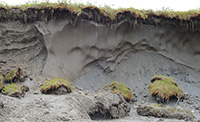
Permafrost is ground that stays frozen year round.
Photo courtesy National Park Service - Gates of the Artic |
Researchers supported by the Department of Energy's Office of Science are visiting here and other remote locations to study how permafrost - soil that's frozen for consecutive multiple years - thaws. Because soils in high latitude systems where this happens store almost twice as much carbon as the entire atmosphere, figuring out the thawing process is essential to modeling terrestrial ecosystems and climate. Improving Earth system models can help scientists better understand the likely extent and effects of future climate change.
The Earth's Freezer
Permafrost's deep layers act like the world's ice chest, locking away organic matter such as dead plants and animals from degradation for thousands of years. The cold temperatures and waterlogged soil slows decomposition to a near halt.
But today the Arctic is warming at a pace that hasn't occurred for the past three million years. Rising at a rate twice as fast as the rest of Earth, the Arctic's average temperature could increase by as much as 14 degrees F between 2081 and 2100.
This warming could cause permafrost to thaw much faster and more extensively than ever before. Depending on the rate and extent of climate change, the Arctic could lose 30 to 70 percent of its permafrost in the next century.
Organic matter in thawed permafrost can decompose rapidly. As bacteria, fungi, and other tiny organisms break down the matter, they release the greenhouse gases carbon dioxide and methane. Every 1 degree C (1.8 degree F) increase in average global temperatures could result in permafrost thawing enough that it releases a year-and-a-half's worth of human-made carbon dioxide emissions. Greenhouse gases from the thawed permafrost would lead to more climate change, which then could lead to more permafrost thawing - a self-reinforcing cycle.
"This is the most important tipping point," said Jizhong Zhou, a researcher at Lawrence Berkeley National Laboratory (LBNL) and professor at the University of Oklahoma.
A Rewarding Collaboration
While researchers understand why permafrost is important, many questions remain unanswered. Even models that have in-depth information about land, ocean, and atmospheric processes lack enough detail about the Arctic. - More...
Sunday AM - September 10, 2017 |
|
Alaska Science: North Korea blast lights up Alaska seismometers By NED ROZELL - On Saturday night, Sept. 2, Matt Gardine was at home outside Fairbanks playing with his daughter when his phone beeped. As the seismologist on call with the Alaska Earthquake Center, Gardine’s duty was to get information out about detectable earthquakes right after they happen.
A few minutes earlier, at 7:30 p.m., a wave of energy had passed through Alaska. The shake had propagated through the entire planet, first reaching Alaska near the village of Wales and racing southeast from there.
Looking at the waveform that registered on seismometers from Tin City to Ketchikan, Gardine noticed its squiggle signature did not look like an earthquake. He saw its origin was North Korea, which doesn’t have many large earthquakes. He also thought it curious that the disturbance occurred right on the half hour, at 7:30.
Though people in China and Russia reported feeling a shake, which U.S. Geological Survey scientists estimated as magnitude 6.3 at its source in North Korea, Gardine suspected no Alaskans would detect the movement and that it was not an earthquake. He issued no alerts.
The shake that registered on Alaska seismometers and most sensitive instruments worldwide was an underground nuclear explosion by North Koreans. Since the Comprehensive Nuclear-Test-Ban Treaty in 1996, North Korea has been the only country conducting these tests.
“It was almost certainly underground,” Gardine said. “They did it to test that they can detonate a bomb, that their bombs are good.”
Detecting nuclear explosions is not the job of the researchers who work at the Alaska Earthquake Center, based at the university in Fairbanks. There is an Air Force agency, the Technical Applications Center, with that responsibility.
But Mike West, Alaska’s state seismologist, said he and others at the center are “scientifically deeply interested” in the blasts. More than 400 seismometers planted around Alaska have registered two North Korea tests last year and one in 2015. Seismometers all over North America caught the same signals a few minutes later. - More...
Sunday AM - September 10, 2017
|
|
Southeast Alaska: State Postpones Final Phase of Wrangell Junkyard Site Cleanup - After a series of meetings in the Wrangell area with local government officials, tribal representatives, and the public, the Alaska Department of Environmental Conservation (DEC) has postponed plans for local disposal of treated soil from the Wrangell Junkyard cleanup project until April 1, 2018, to allow for more time to explore alternative plans and funding.
“The state stepped in last year and worked collaboratively with local officials and the U.S. Environmental Protection Agency (EPA) to remove buried batteries, junk cars, and other debris and to treat contaminated soils to remove the risk of the migration of lead to tidelands and neighboring properties. We certainly want to continue to work with the local and tribal governments on the next phase of this project, which is to find a permanent and safe place for the treated soils. This postponement will provide them opportunity to seek project funding to have the treated soil shipped to a disposal facility in the lower 48, rather than disposing of it in an engineered monofill on Wrangell Island, as currently planned,” said John Halverson, a DEC Contaminated Sites manager.
During the site cleanup in 2016, more than four times the originally estimated volume of contaminated soil was excavated, dramatically increasing the total amount of lead contaminated soil to 18,350 cubic yards. Although the treated soil is no longer a threat to neighboring lands or waters and isn’t considered a hazardous waste, it does contain lead and must be managed properly. - More...
Sunday AM - September 10, 2017
Fisheries: Warmer waters from climate change will leave fish shrinking, gasping for air - Fish are expected to shrink in size by 20 to 30 per cent if ocean temperatures continue to climb due to climate change. And a new study by researchers at the University of British Columbia provides a deeper explanation of why fish are expected to decline in size.
“Fish, as cold-blooded animals, cannot regulate their own body temperatures. When their waters get warmer, their metabolism accelerates and they need more oxygen to sustain their body functions,” said William Cheung, co-author of the study, associate professor at the Institute for the Ocean and Fisheries and director of science for the Nippon Foundation-UBC Nereus Program. “There is a point where the gills cannot supply enough oxygen for a larger body, so the fish just stops growing larger.”
Daniel Pauly, the study’s lead author and principal investigator of the Sea Around Us at the Institute for the Ocean and Fisheries, explains that as fish grow into adulthood their demand for oxygen increases because their body mass becomes larger. However, the surface area of the gills — where oxygen is obtained — does not grow at the same pace as the rest of the body. He calls this set of principles that explains why fish are expected to shrink “gill-oxygen limitation theory.” - More...
Sunday AM - September 10, 2017
|
RICK JENSEN: What To Do About North Korea - Seems like there are two North Korea options: Bomb the hell out of them and kill innocent people, or hope North Korea doesn't bomb innocent people first.
While scholars may differ on some particulars of who really controls North Korea, be it Kim Jun Un, the military, its own "deep state" or some combination, most agree that the power brokers remain in control by keeping the people in a constant psychological state of war.
The media is controlled by the government, and access to the internet is restricted to North Korean propaganda and domestic entertainment sites.
Rattling the nuclear sabre is just another way Kim holds control over the people.
Unfortunately, he has convinced the rest of the world that he may be crazy enough to use them.
Fortunately, he can be easily cowed by China.
Remember recently when everyone from the New York Times to the L.A. Times was freaking out that Trump might bomb North Korea?
Kim was threatening to lob a couple of missiles onto Guam.
The Chinese government let it be known that should North Korea attack any other sovereign nation, particularly Guam, China would not come to the aid of North Korea.
That's good news, but it doesn't solve the problem of a country that has no desire to be part of any world community.
Being an active player in regional or world policies would mean the puppet masters of North Korea would free some strings from the people they control.
Many people believe the U.S. could simply "take out" North Korea's nukes with our own missiles.
The problem with that line of thinking is that if you miss a couple, those nukes could hit South Korea, Guam, Japan and maybe even the U.S. North Korea has been shuffling missiles around on portable launchers, too, making them difficult to locate.
Former acting and deputy director of the CIA, Michael Morell, told "CBS This Morning" this past week that the U.S. faces two choices on North Korea.
"One is a military attack with devastating consequences and no guarantee of success and the other is acceptance of where they are and where they're going with containment and deterrence. I think the latter makes the most sense. I think that's where we'll end up," - More...
Sunday AM - September 10, 2017
|

Editorial Cartoon: Equifax Data Breach
By Monte Wolverton, Cagle Cartoons
Distributed to subscribers for publication by Cagle Cartoons, Inc.
New beverage container excise tax By Deborah Hayden - At next Tuesday’s, September 5, Assembly meeting, the Assembly will consider an ordinance establishing a beverage container excise tax. The ordinance dedicates revenue from this tax, up to $450,000, for funding nonprofits.
Any additional revenue above $450,000 from this tax, up to $750,000, will replenish the economic development fund. Revenue above $750,000 will flow into the education fund. - More...
Monday PM - September 04, 2017
Substance Abuse Prevention By Christine Furey - Good morning Ketchikan. I would like to start by saying that I suppose that I am just as much to blame as anyone else that is involved with any one of the task forces, Coalitions or agencies in our community but I am incredibly concerned about a few things. - More...
Monday PM - September 04, 2017
 |
Stop medical price gouging By Amanda Mitchell - We all need care from time to time and finding that perfect doctor can be tough. Adding to the problem of finding a good doctor is price transparency. No one wants to go in to a doctor needing help for something that is not life threatening and come out with a medical bill that is life altering. However, this is reality and medical insurance has only made this problem worse: It’s called mining for diagnostic codes. With how the system is currently set up, insurance companies allow clinics to exploit the system to get the max amount of money they can possibly extract. It's not about what is fair or reasonable to the individual. - More...
Wednesday AM - August 30, 2017
 |
“Alaska Government Accountability Act” By Rep. Dan Ortiz - If legislators do not pass a budget within the regular legislative session, they should not receive legislative per diem during the subsequent special session. Alaskans for Integrity – a group founded by one independent lawmaker, one Democratic lawmaker and one Republican citizen –proposed a ballot initiative for 2018 that will raise legislative standards of financial transparency and accountability to the public. I support this initiative, known as the “Alaska Government Accountability Act.” - More...
Wednesday AM - August 30, 2017
Please stop the name calling By Kelli Carlin-Auger - Regarding David Hanger's response to Rex Barber's letter: David, the fact that you call Liberals "Libtards" show your true (ugly) colors. - More...
Wednesday AM - August 30, 2017
An opportunity to return to honor By Mary L. Stephenson - By the time William H. Seward was born in 1801, Russia’s empire included Kodiak and Sitka.
In 1867, Seward, as President Abraham Lincoln’s secretary of state, negotiated the Alaska Treaty of Cession in 1867. Two years later, the retired public servant began traveling around the world – first to Alaska. - More...
Wednesday AM - August 30, 2017
CORPORATE TAXES SHOULD BE ZERO By Wiley Brooks - Tax reform is a priority agenda item in the 115th Congressional session. In the coming months, we will hear significant proposed changes to the extremely complex income tax laws. One of the hotly debated provisions will be what to do with the corporate tax rate. The current rate of 35% is the highest in the industrialized world. When you add the corporate amount charged by most states the total in near 40%. The average rate levied by other industrialized countries is about 23%. This is a huge disadvantage for American businesses in the global economy. It is driving American corporations and their profits offshore to avoid such a heavy tax burden. - More...
Wednesday AM - August 30, 2017
 Webmail your letter or Webmail your letter or
 Email Your Letter To: editor@sitnews.us Email Your Letter To: editor@sitnews.us
|
Articles &
photographs that appear in SitNews may be protected by copyright
and may not be reprinted or redistributed without written permission
from and payment of required fees to the proper sources.
E-mail your news &
photos to editor@sitnews.us
Photographers choosing to submit photographs for publication to SitNews are in doing so, granting their permission for publication and for archiving. SitNews does not sell photographs. All requests for purchasing a photograph will be emailed to the photographer.
|
|

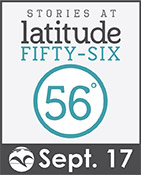





 Weekly Specials
Weekly Specials
Online Shopping; Pickup or Delivery |








The Local Paper is
available online.
Click here for this week's printed edition (PDF)
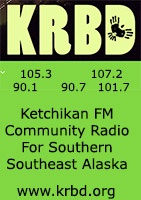

|
|
|
![]() Contact
Contact ![]()
![]() Webmail
Letters
Webmail
Letters![]()
![]() News Tips
News Tips![]()
![]() Copyright Info
Copyright Info![]() Archives
Archives![]() Alaska
Alaska![]() Ketchikan
Ketchikan![]() SE Alaska
SE Alaska![]() Dave Kiffer
Dave Kiffer![]() Money Matters
Money Matters ![]() June Allen
June Allen![]() Dave
Kiffer
Dave
Kiffer![]() Louise
B. Harrington
Louise
B. Harrington![]() Ketchikan
Arts
Ketchikan
Arts![]() Ketchikan
Museums
Ketchikan
Museums![]() KTN Public
Library
KTN Public
Library![]() Ketchikan Links
Ketchikan Links![]() FAA Accident Reports
FAA Accident Reports ![]() NTSB
Accident Reports
NTSB
Accident Reports![]() Court Calendar
Court Calendar![]() Recent Filings & Case Dispositions
Recent Filings & Case Dispositions ![]() Court Records Search
Court Records Search![]() Wanted:
Absconders
Wanted:
Absconders![]() Sex Offender Reg.
Sex Offender Reg.![]() Public Notices
Public Notices![]() AST Daily Dispatch
AST Daily Dispatch![]() KTN
Police Reports
KTN
Police Reports![]() Juneau Police Reports
Juneau Police Reports ![]() Today's
Forecast
Today's
Forecast![]() KTN
Weather Data
KTN
Weather Data![]() AK
Weather Map
AK
Weather Map![]() AK Weathercams
AK Weathercams![]() AK Earthquakes
AK Earthquakes![]() Ketchikan
Ketchikan![]() Yellow
Pages
Yellow
Pages![]() White
Pages
White
Pages![]() Local Government
Local Government![]() State & National
State & National
























































